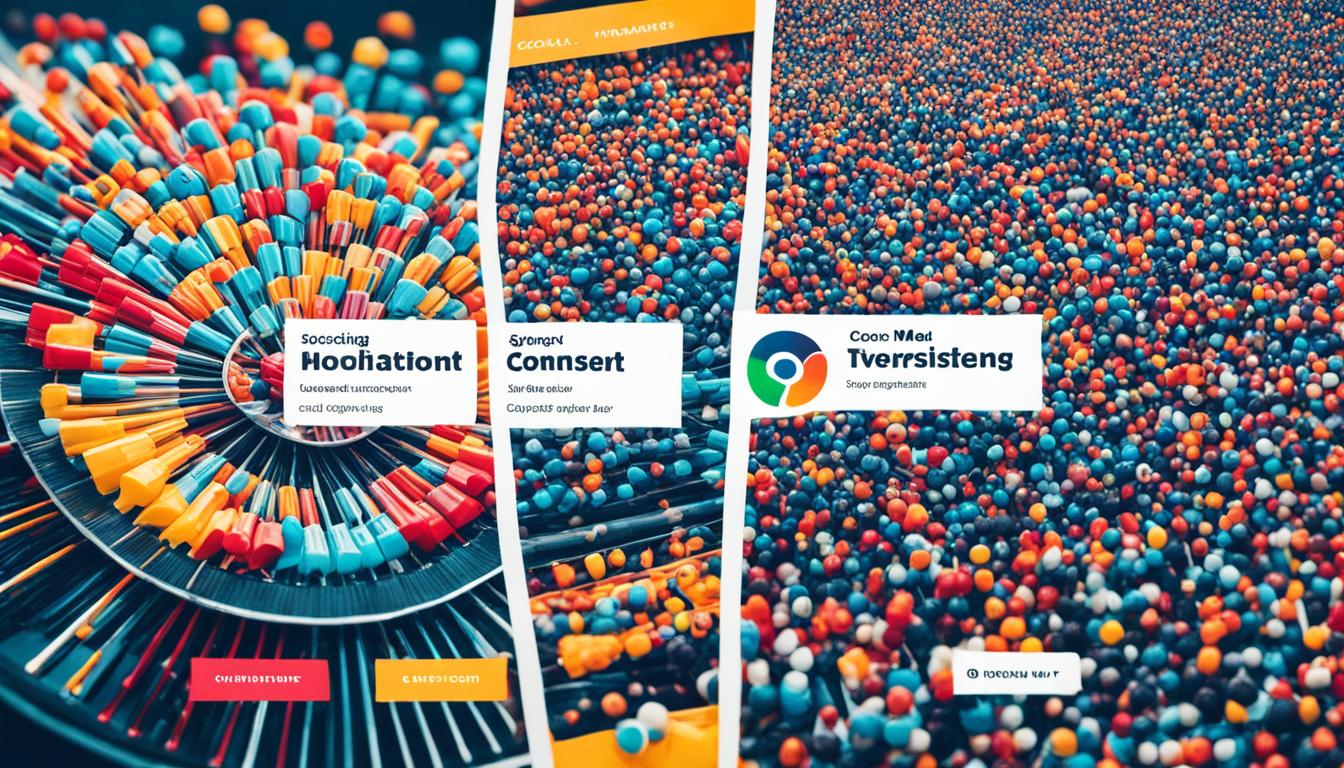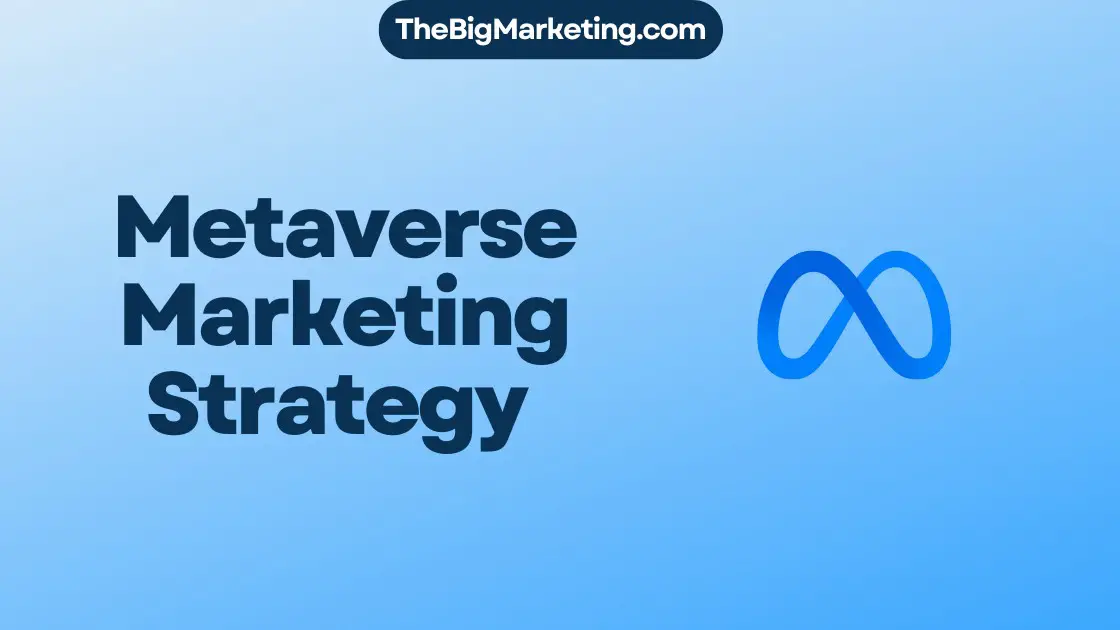DMA marketing, or Designated Marketing Area, tailors TV ads and shows to certain places in the U.S. It has 210 DMAs that span the entire nation. These areas are looked after by Nielsen, which checks TV and radio audiences. This lets advertisers show their ads to people most likely to be interested. It helps them use their ad budget better.
DMAs play a big part in showing live sports, as they pick which games people see in different places. They are also key in online ads, where marketers can target ads to specific DMAs on Google and social media.
Key Takeaways:
- DMA marketing adapts TV programming and ads for specific places in the U.S.
- The country is covered by 210 Designated Market Areas.
- Nielsen, which measures TV and radio audiences, manages these DMAs.
- Advertisers can better spend their ad money by targeting the right viewers.
- DMAs are crucial for live sports and digital advertising.
What Does DMA Mean?
DMA stands for Designated Market Areas in the U.S. These are areas set by Nielsen for TV. They cover all 50 states with 210 areas. This helps in targeting TV shows and ads better. DMA is different from the Direct Marketing Association. It focuses on local marketing.
DMA marketing helps in making ads that speak to local people. It looks at what people in different areas like and buy. By understanding DMAs, marketers can tailor their ads. This way, they can connect better with people in various places.
DMA Applications
DMAs are key in TV and advertising. They help local TV stations decide what programs people see. They also shape what sports games and ads are shown in certain areas. Let’s dive deeper into these uses.
Local TV Stations
DMAs mainly affect local TV stations. Each area has its own specific channels that match the local audience. This way, people get shows that matter to them and their community.
Live Sports Broadcasting
Sports broadcasting greatly relies on DMAs. They decide which sports games are shown where. So, the game you watch might be different from someone in another area. Plus, the commercials during these games are chosen for the local audience.
Advertisers use DMAs to make their ads more effective. They can target exactly who sees their ads. This helps businesses save money and increase their ad success.
The Influence of DMAs
DMAs are crucial for customizing content and ads to different regions. They make sure people see things that are relevant to them. Understanding DMAs lets companies market smarter and connect better with their audience.
DMAs and Marketing
Designated Market Areas (DMAs) are key for marketers for two reasons. Firstly, ad targeting helps make sure ads hit the right audience. This avoids wasting ads on those unlikely to respond. By choosing the correct DMA, they ensure ads reach those who are most interested. This optimizes how they spend their ad budget.
Secondly, not all DMAs have the same number of viewers. Some have a lot more people watching. This means advertisers should focus on these bigger DMAs. By doing so, they can speak to more potential customers. This increases their chance of finding new buyers.
DMAs, therefore, are super important for advertisers. They help them target their ads better. By learning about different DMAs and their audiences, marketers can make smarter choices. This ensures their ads have the strongest effect and reach the best customers.
DMA Targeting
In the world of marketing, DMA targeting is a key tool. It’s mainly used in TV and radio ads. It lets advertisers focus on certain areas, or DMAs, to reach the right people. This tactic works great for promoting local businesses.
But now, DMA targeting is also big in online marketing. Google and social media let marketers aim at specific DMAs. This means they can target people in those areas more directly.
Online marketing has embraced DMA targeting. This lets companies use both traditional media and the internet to reach people. It’s a complete plan that makes sure ads connect with the intended audience.
Let’s look more closely at how DMA targeting has changed marketing:
Television Advertising
In TV ads, DMA targeting helps advertisers pick areas to focus on. They consider what people in each DMA like and what they buy. This makes sure the ads talk directly to the right viewers.
Radio Advertising
Radio ads also gain from focusing on DMAs. Advertisers tailor their messages to fit the local culture and language. This makes listeners more likely to respond well to the ads.
Online Marketing
DMA targeting has grown in the online world. Marketers use tools like Google and social media for precise targeting. They can reach people in specific places, making online ads more effective.
Using DMA targeting online lets businesses customize their ads for different areas. It helps them use their ad budget better and improve their chances of making sales.
By using DMA targeting across TV, radio, and online, businesses can approach their audience more effectively. They can be precise and relevant in their advertising.
To see DMA targeting’s effects in various channels, look at the following table:
| Marketing Channel | Benefits of DMA Targeting |
|---|---|
| Television | – Tailor ads to specific geographic regions covered by different DMAs – Reach the most relevant audience – Optimize ad spend |
| Radio | – Make ads more relevant by considering local culture and preferences – Create a connection with the target audience – Increase chances of a positive response |
| Online Marketing | – Precisely target specific DMAs online – Tailor messages to unique needs and preferences of different regions – Optimize ad spend and increase chances of conversions |
As it keeps evolving, DMA targeting helps marketers in both traditional and digital campaigns. It boosts results, maximizes investment returns, and connects more deeply with audiences.
Online DMA Targeting
The internet has changed the game for businesses. They can now reach beyond the usual 210 TV markets in the US. Using online DMA targeting, companies can use paid search and social media ads to get global attention. This means more chances to make their brand known and get new customers.
Yet, the value of local businesses stands strong, and people still look for local products and services. This creates what’s known as a geographical divide. Online DMA targeting is the bridge over this divide.
It allows marketers to pinpoint their efforts on specific areas. By choosing relevant DMAs, they make sure their ads talk to the right people. This focus increases the success of marketing efforts and attracts customers ready to act.
Let’s dive into how online DMA targeting is done:
1. Identifying the Target DMA
The first move is picking the DMA that matches your audience. This could depend on various factors like how close they are to you or what they like to buy. By knowing where your audience is, you choose DMAs that promise the best results.
2. Crafting a Region-Specific Marketing Message
After finding your target DMAs, you need to speak their language. This means knowing what makes your audience tick in those areas. A tailored message creates a stronger bond with potential customers, increasing your chances of success.
3. Selecting the Right Channels
This strategy gives you the choice of the best ways to reach your audience. This might be through paid search, social media, or even local sites. Choosing well ensures your message reaches the right people in the chosen DMAs, pulling more traffic your way.
| Benefits of Online DMA Targeting | Challenges of Online DMA Targeting |
|---|---|
|
|
In the end, online DMA targeting lets businesses conquer the geographical divide and effectively reach those they aim for in specific areas. This method boosts brand visibility, engagement, and conversion rates. Whether it’s through paid search or social media, this strategy connects businesses with the audience they seek in a direct and impactful way.
How DMAs Work
DMAs, short for Designated Market Areas, are essential in TV and radio ads. They also matter for figuring out who’s watching or listening. These areas are named after big cities and cover places where people get the same local stations.
The main role of DMAs is to track who watches or listens to what, which helps media folks and advertisers. Knowing about the audience in each DMA helps create better content. It helps send the right ads to the right people, based on what they like.
Thanks to DMAs, media companies can see how popular their stuff is. They learn about audience size and what people prefer. This info helps them reach more folks effectively.
For those making and placing ads, DMAs are super useful for targeting. By focusing on certain areas, ads reach the right viewers. This makes ad money go further and campaigns work better.
In the end, DMAs are key for the media world. They allow for smart ad targeting and help companies use data to make decisions. You can find DMA maps on Nielsen’s website.
| Benefits of DMAs | Examples |
|---|---|
| Targeted advertising | Ad campaigns tailored to specific DMAs yield higher conversion rates. |
| Optimized ad spend | Focusing on DMAs with high viewership ensures efficient use of advertising budgets. |
| Data-driven insights | Understanding audience demographics in different DMAs helps in content creation and audience engagement strategies. |
| Effective media planning | Media companies strategically position themselves in different DMAs based on audience size and preferences. |
Focusing Your Message with DMAs
Designated Marketing Areas (DMAs) are key in helping businesses reach the right people. DMAs group people by things like where they live or what they need. By picking the right DMAs, companies can make sure their message hits home with their target audience. This way, their marketing is more likely to make a big impact.
DMAs are a great tool for precision in marketing. They help businesses get to know the people in a certain area better. Then, companies can make ads that truly speak to what these people care about or need. This means ads can hit closer to home by tapping into local culture or solving local problems.
Imagine an outdoor clothing company launching a winter line. If they target DMAs with cold weather, they can focus their ads on the importance of staying warm and stylish. This strategy makes sure the ad reaches those who really need winter clothes.
Also, using DMAs well helps companies spend their marketing budget smarter. Instead of spreading their efforts too thin, they can focus on areas where they’ll likely see the best results. This focused approach is much more efficient and effective.
Benefits of Focusing Your Message with DMAs:
- More precise targeting: DMAs help businesses craft messages for specific groups.
- Greater relevance: Focusing on what’s unique about a DMA makes ads more impactful.
- Optimized ad spend: With DMAs, companies can put their money where it counts most.
- Improved campaign effectiveness: Targeting specific areas means marketing efforts go further.
By leveraging DMAs wisely, businesses can supercharge their marketing campaigns. Understanding each DMA’s unique traits allows for more personalized and successful marketing strategies. This focus not only engages but also drives results, connecting businesses with their intended audience effectively.
Designated Marketing Area Best Practices
Using DMAs in PR and marketing is very effective. To get the best results, you should follow some key tips:
Research and Understand Your Target DMAs
Before starting a marketing campaign, research your target DMAs well. Learn about the audience and places in each DMA. This will help you make your products and ads fit what they want and like.
Create Personalized Pitches that Resonate
In big DMAs, the competition is tough. You’ll need to make pitches that really speak to the audience. Look at what makes each DMA unique and adjust your message. This way, your pitch is more likely to succeed and get media attention.
Consider Cost-Effectiveness and Target Audience Size
Big DMAs might look good, but think about your budget and how many people you want to reach. You should choose DMAs that give good results without costing too much. Sometimes, smaller DMAs can be better.
Work with DMA Specialists for Optimal Results
If you’re new to using DMAs, consider working with experts. They know a lot about DMAs and can help you pick the right ones. They can also create strategies that work well.
Utilize Data for Continuous Campaign Improvement
Don’t forget about the power of data. Use tools to see how your campaigns are doing. Look at how people are responding to your ads and if they are buying. This information will help you make your future campaigns even better.
By following these tips for DMAs, you can reach your audience better, get more from your marketing, and have successful campaigns.
The Relevance of DMAs in the Digital Age
Technology is growing, and we’re watching more online. Yet, Designated Market Areas (DMAs) stay important in this digital world. Even though the internet has made it easy to get media from anywhere, DMAs help target certain audiences. Companies like Nielsen are now using streaming data for precise audience measurement.
DMAs help marketers and advertisers navigate changing media trends. They let businesses reach the right people with precision. By knowing their audience within DMAs, companies can create marketing that truly connects.
The Importance of DMAs in Internet Streaming
Internet streaming is more popular than ever, but DMAs still matter. They’re crucial for targeting specific areas. Local businesses and regional ads are still key.
DMAs and streaming together mean businesses can target specific areas online. This method ensures messages find the right people. It blends wide reach with focusing on certain regions, leading to effective marketing.
DMAs also show how people in different areas enjoy media. This information helps businesses improve their marketing plans.
Adapting to the Changing Media Landscape
The media world is constantly changing, and DMAs help advertisers keep up. They reveal local consumer trends, so messages can be more relevant.
With DMAs, advertisers can use their budgets smarter in this digital era. They focus on the best areas for their goals. This way, they reach their audience more effectively.
The Future of DMAs
Even as the media world evolves, DMAs will still be needed. They give key info on who’s watching, their likes, and habits, helping marketers make smart choices. As streaming grows, companies like Nielsen will keep adapting to measure media use well.
In short, DMAs are very helpful today. They ensure precise targeting, help understand audiences, and adapt to media changes. With DMAs, marketers can improve their strategies and be successful in the digital era.
Conclusion
DMA marketing is a great way for ads to reach the right people. Using Designated Marketing Areas, or DMAs, companies can use their ad money wisely. They can make sure their ads talk directly to their audience, no matter if it’s on TV, radio, or online.
When businesses understand DMAs, they make smarter choices. They look at who lives in an area and what they like. Then, they can make ads that those people want to see. This smart planning helps to increase success and get more from their spending.
Even as our world changes, DMAs stay important for marketing. The internet has made it easier to reach far and wide, but DMAs help focus on the right places. Using DMAs along with smart data use, companies can win in the marketing game and stay on top.







